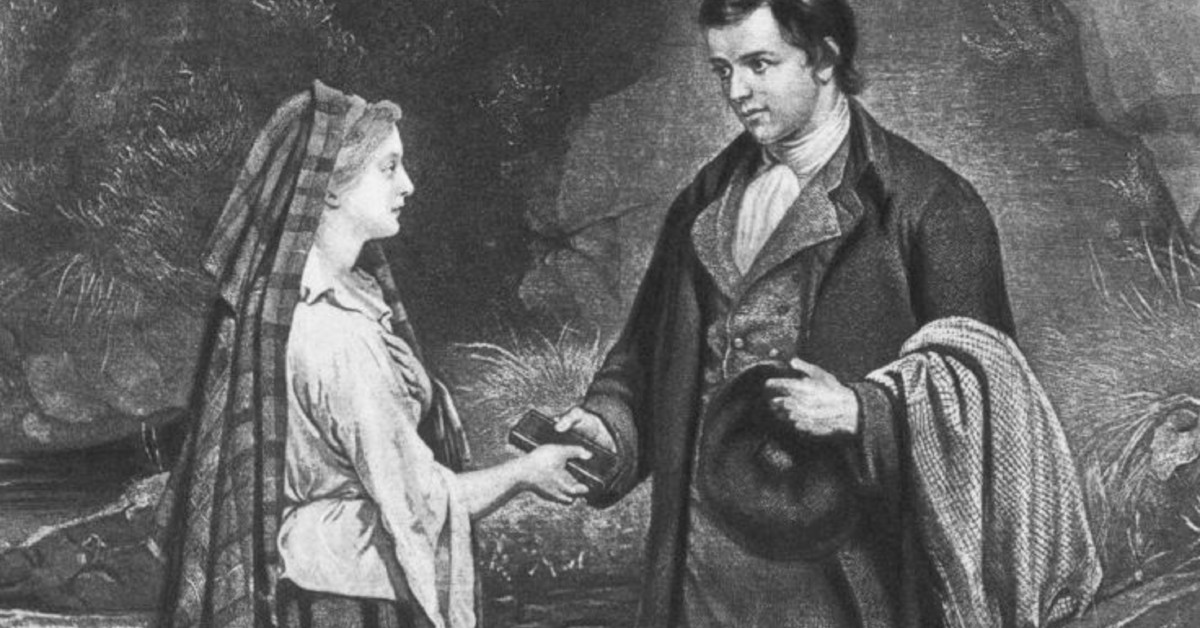’IPhone’ spotted in painting from 1882 sparks time travel theories

Art enthusiasts have been captivated by an 1882 engraving titled The Betrothal of Burns and Highland Mary by artists R. Josey and James Archer, in which they have identified what appears to be an “iPhone.” This historical piece portrays the esteemed Scottish poet, Robert Burns, along with his love interest, Mary Campbell, declaring their affection for one another. In the engraving, Burns is outfitted in outdoor attire, one hand grasping a hat and his coat slung over his arm, while his other hand holds a rectangular object he is passing to Campbell, standing barefoot across the River Ayr.
The existence of this object in an image that predates the advent of the iPhone by approximately 125 years has left some viewers speculating about the possibility of time travel. During that period, the world’s initial coal-fired public electricity generating station had only just begun operations in London. Despite the visual similarity between the object in the artwork and an early-generation iPhone, there is a more plausible explanation that negates the need for a time-travel theory.
When Burns and Campbell pledged their love, they adhered to the custom of exchanging Bibles across a flowing stream. The couple made plans to wed in 1786 beside the river in west Scotland, following this ancient tradition. This historical context implies that the object depicted in the engraving is likely a religious book, rather than a futuristic mobile device.
This isn’t the first instance of viewers identifying contemporary objects in historical artwork. A supposed “Nike trainer” was previously alleged to be visible in a 17th-century painting. While the allure of anachronistic elements in art sparks intrigue and fuels imaginative theories, the explanations for these appearances often lie in the practices and artifacts of the time.

